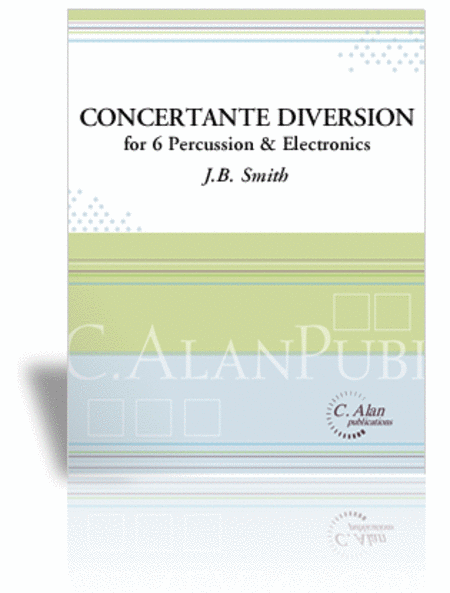Concertante Diversion, Version 2
for 6 Solo Percussion & CD
-
Ships in 3 to 4 weeks
Details
Description
SKU: CN.04626
For 6 Solo Percussion & CD. Composed by J.B. Smith. Concertos. Duration 12:00. Published by C. Alan Publications (CN.04626).High energy piece with much interplay within the soloist group and between the soloists and the band.
Music can be defined simply as "organized sound." From folk tunes to large symphonic works, structure is the foundation on which musical expression is built. "Concertante Diversion" grew out of a single melodic idea that provided the structural foundation for the piece. From the melody, a phrase length was established, a harmonic scheme was implied and countermelodies were derived. Several complementary voices were created which offered a musical "block of stone" from which the piece was carved. The core phrase is then repeated nine times. Each iteration emphasizes different voices, rhythmic phrasings and instrumental groups. The piece progressively introduces all of the ideas in different guises and culminates with the entire family of ideas being played simultaneously at the end. The soloists provide the rhythmic foundation of the work and also serve as a foil against the winds to establish structural lines through timbral contrast. In order for the shape of the piece to have clear lines of delineation, orchestration and harmonic movement were used to focus attention on various aspects of the large structure. The melody's ability to be broken up into different size melodic chunks provides changes in the rhythmic pacing of the work. Because the tune can be heard in groups of three, five, and seven subdivisions, the form can be broken up into various rhythmic groupings.

 Share
Share